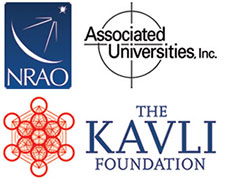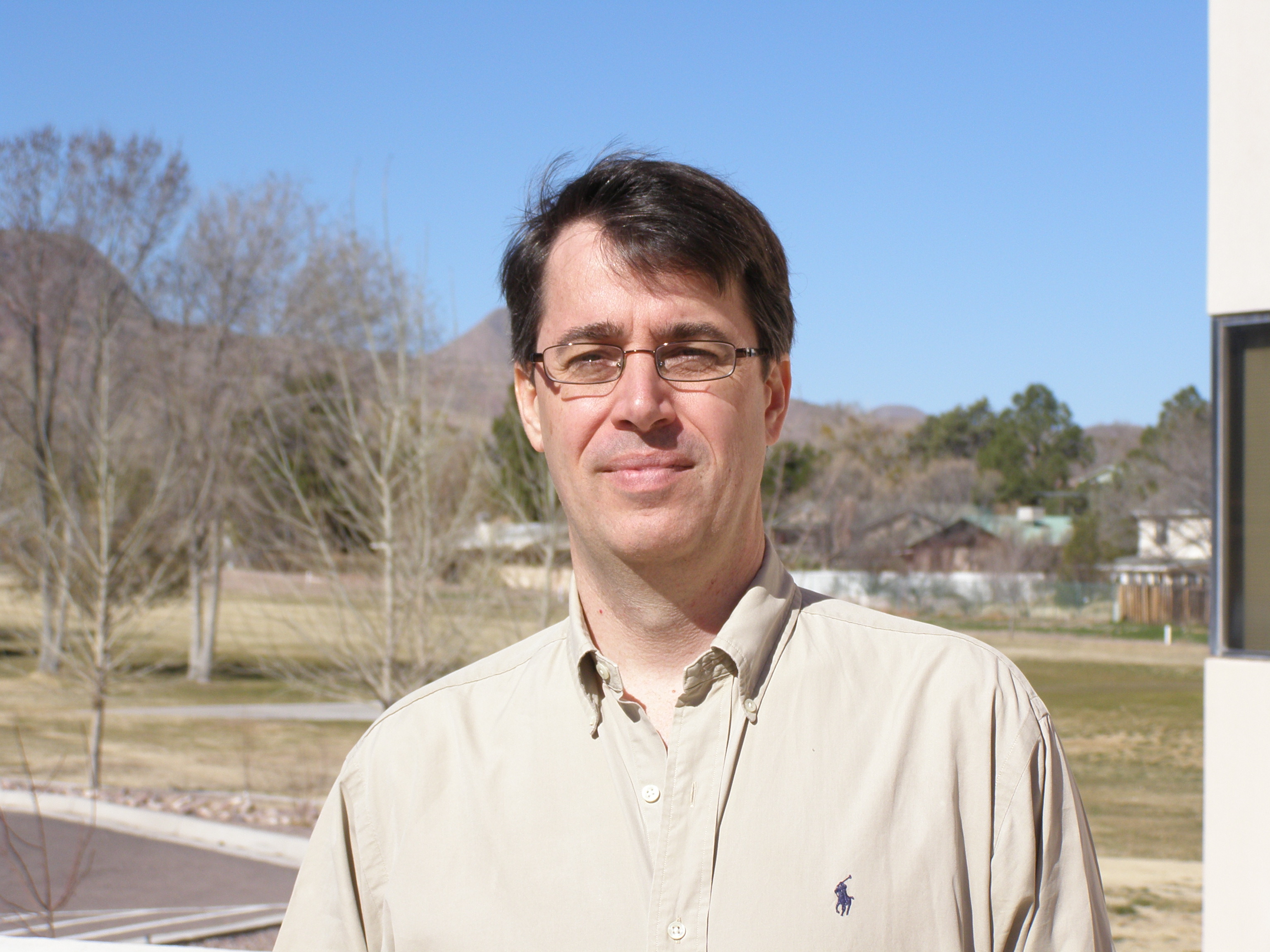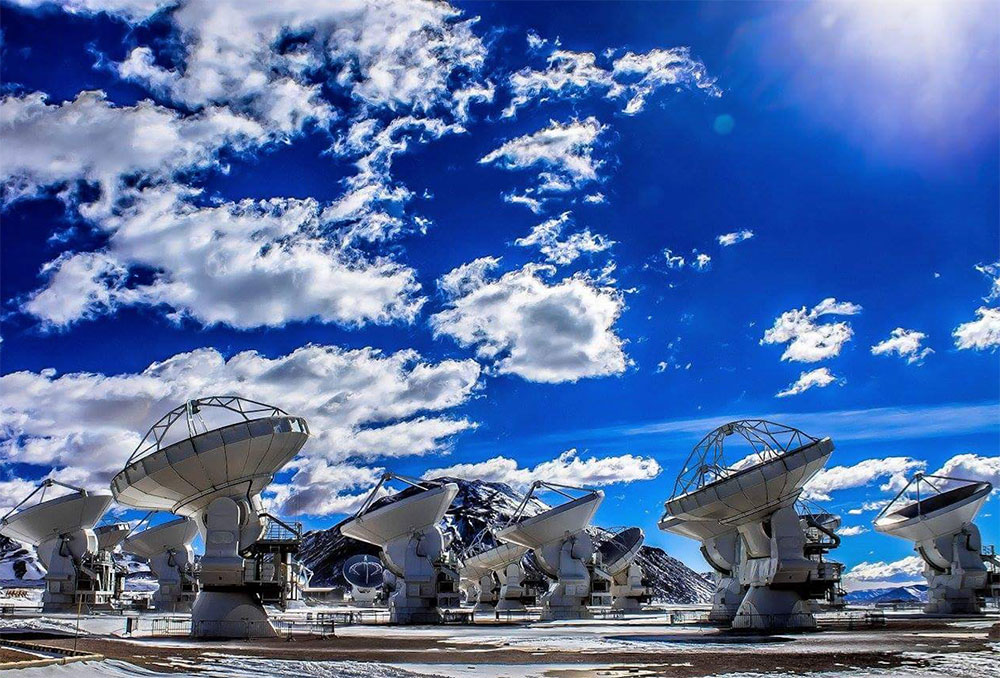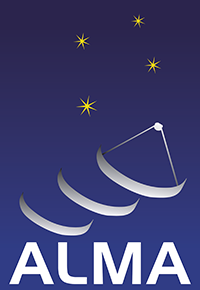NRAO eNews
Volume 10, Issue 2
22 February 2017
NRAO eNews
Volume 10, Issue 2 • 22 February 2017

Upcoming Events

ALMA Proposal Writing Workshops
Various Dates: Mar 16 - Apr 5, 2017 | Various Locations

NRAO/LBO Community Day @ University of Michigan
Mar 29, 2017 | Ann Arbor, MI

NRAO/LBO Community Day @ UNAM-Morelia
Apr 25 - 26, 2017 | Morelia, Mexico

American Astronomical Society Meeting
Jun 4 - 8, 2017 | Austin, Texas

2017 Astrobiology Graduate Conference
Jun 5 - 9, 2017 | Charlottesville, VA

Women in Astronomy IV: The Many Faces of Women Astronomers
Jun 9 - 11, 2017 | Austin, TX

Developing the ngVLA Science Program Workshop
Jun 26 - 29, 2017 | Socorro, NM
First Announcement: U.S. Radio-Millimeter-Submillimeter Futures III

The NRAO has organized a series of three conferences for the astronomy community to broadly discuss and seek consensus regarding potential U.S. futures for radio-millimeter-submillimeter (RMS) science in the 2020’s and beyond. Funded by the Kavli Foundation and Associated Universities, Inc. (AUI), the third and final conference in this series – Futures III – will be 2-4 August 2017 in Berkeley, California and will be attended by scientists from U.S. and international universities, observatories, and laboratories in virtually every field of astrophysics.
The Futures I conference – held 15-17 December 2015 in Chicago – was structured around the key radio-millimeter-submillimeter (RMS) science themes and community priorities identified in the New Worlds, New Horizons Astro2010 Decadal Survey. This included fields where radio data was supporting other instruments, and those focused on possible standalone radio astronomy outcomes. Futures I yielded a compelling definition of the transformational science that interests the community and motivates the exploration of the scope and feasibility of the future RMS instrument and technique options.
The community and NRAO selected four areas for deeper discussion at the Futures II conference, held 3-5 August 2016 in Baltimore: (1) a next-generation Very Large Array (ngVLA); (2) a Hydrogen Epoch of Reionization Array (HERA); (3) pulsar instrumental and scientific opportunities; and (4) the Cosmic Microwave Background (CMB). Parallel sessions broadly discussed potential RMS Flagship and Small/Midscale initiatives associated with these. Flagship options are major investments with widespread community benefit and support that would require funding by or on a scale comparable to the NSF Major Research Equipment and Facility Construction program. Small/Midscale initiatives are investments that might be funded via the NSF Mid-Scale Initiative Program.
At Futures III – planned to be held at the University of California, Berkeley, 2 – 4 August 2017 – we will continue discussions and analysis of two key opportunities emerging from the Futures I and II meetings – ngVLA and Spectral-Line Cosomology & Low Frequency Instruments, including HERA and related intensity mapping opportunities. An update on other key areas – CMB, Pulsars and mid-scale developments – is also planned. Over the past two years, the Kavli meeting series has been a community-wide effort to explore our scientific visions for the next decade, and seeking to develop consensus and support for RMS initiatives on all resource scales in the upcoming decadal survey.
Registration, the scientific program, and travel information for the Futures III conference will be announced and available online in early March. We look forward to seeing you in Berkeley, California 2 -4 August.
Developing the ngVLA Science Program Workshop

Planning for the Next Generation Very Large Array workshop is proceeding rapidly. The workshop will be held 26-29 June 2017, in Socorro, New Mexico, USA. The workshop is focused on developing the science program that will inform the design concept for the Next Generation Very Large Array (ngVLA).
The general ngVLA design concept entails an interferometric array with 10X larger effective collecting area and 10X higher spatial resolution than the current VLA and ALMA, optimized for operation in the frequency range 10 – 50 GHz, with reasonable performance over 1.2 – 116 GHz. The ngVLA opens a new window on the Universe through ultra-sensitive imaging of thermal line and continuum emission down to milli-arcsecond resolution, as well as unprecedented broad band continuum polarimetric imaging of non-thermal processes.
The Scientific Organizing Committee for the workshop – composed of members of the ngVLA Science Advisory Committee – is arranging an exciting program that will highlight recent results from existing instruments, such as the Jansky VLA and ALMA, and discuss how these results inspire the planning for the ngVLA. There will also be invited talks highlighting synergies between the ngVLA and future major astronomical facilities, both ground- and space-based, spanning the entire electromagnetic spectrum. The final day of the workshop will include community working group sessions to focus the design parameters on the most exciting science while critically assessing potential design trade-offs.
A preliminary schedule is available at the ngVLA Workshop website. Registration is open and free. There will also be time for contributed talks and posters. If you are interested in contributing a science or technical talk or poster, please visit the abstract submission webpage.
We look forward to seeing you in Socorro in June!
Project Director Appointed for Science Ready Data Products

Jeff Kern
[click to enlarge]
I am pleased to announce that Jeff Kern has been appointed as Project Director for Science Ready Data Products (SRDP) at the NRAO. Jeff will formally assume his new Observatory role on 21 March 2017 and will be based in Charlottesville. He will ramp down his role as Common Astronomy Software Applications (CASA) package lead over the next few months.
Jeff will play a key role in defining the requirements and deliverables of the project to deliver Science Ready Data Products from NRAO telescopes and will be responsible for tracking progress and overseeing delivery and acceptance testing of the necessary software product. In his new role, Jeff will work as part of the Science Support & Research department but with a close interface to the Data Management & Software (DMS) department led by Brian Glendenning.
The SRDP initiative is a key NRAO strategic goal and is a central commitment of the new AUI – NRAO Cooperative Agreement with the National Science Foundation. It is also an exciting initiative that will build on our investments in ALMA over the last three decades, use the Very Large Array Sky Survey calibration pipeline as a stepping stone along the path to extend the automation of calibration and ultimately imaging to the VLA, and will significantly expand the user base for NRAO telescopes.
Jeff has been on the NRAO staff since 2005 having joined as a software developer on the ALMA Control Software Team following completion of his Ph.D. studying giant pulses from the Crab Pulsar under Tim Hankins at New Mexico Tech. He played a significant role in the substantial effort to develop the software required for ALMA in a variety of roles prior to assuming the CASA Lead position. Jeff’s commitment to continuing part-time in his CASA Lead role through the transition is an important part of maintaining the momentum of CASA development as we seek to fill that important role.
Please join me in congratulating Jeff in his new role and thanking him for his achievements as the CASA Lead.
ALMA Program News

J. C. Rojas/ESO
[click to enlarge]
ALMA Cycle 4 Science Operations
ALMA Cycle 4 continues, with the array now in the ‘austral winter’ engineering period through February. Investigator observations will resume in C40-1 – 3.7” beam at 100 GHz; 155m longest baseline – in early March.
ALMA Cycle 5 Call for Proposals
A Call for ALMA Proposals with detailed information on Cycle 5 will be issued in March 2017, with a deadline for proposal submission in April 2017. An announcement on the ALMA science portal provides updates to the Cycle 5 Pre-announcement, including the Cycle 5 configuration schedule and additional important information for preparing proposals.
ALMA Science Verification Data
New Science Verification data containing ALMA solar observations is available on the Science Portal. This data release contains varied observations of the Sun obtained during the Solar commissioning campaigns in 2014 and 2015.
ALMA Science Sustainability
A Call for Proposals for ALMA Development Studies will be released 1 March 2017. The deadline for proposals will be 1 May 2017 for funding during Fiscal Year 2018, depending on the federal budget process. We welcome any member from within the North America ALMA Operations Partnership to submit a proposal to investigate a potential ALMA upgrade (hardware, software, or advanced techniques).
Seven proposals were received for ALMA Development Projects during the Call that just ended. Thirty-six investigators from nine institutions in the U.S. and Canada were represented on the proposals. Five of the proposals focused on advanced hardware and two on advanced techniques. The Proposals are now being refereed.
ALMA Proposal Writing Workshops

In advance of the ALMA Cycle 5 Call for Proposals, the North American ALMA Science Center (NAASC) will organize a series of ALMA proposal writing workshops at a number of North American institutions from the middle of March to the beginning of April 2017. The goal of these events is to provide users with the knowledge they need to carry out cutting-edge scientific research using the ALMA facilities. We are particularly interested in reaching new users, so no experience with radio astronomy is required to participate!
These ALMA events are one- to two-day workshops designed in cooperation with institutions across North America, and hosted by experienced local postdocs as part of the ALMA Ambassadors program. Participation is free. No registration fees will be charged. These events include science talks, an introduction to submillimeter interferometry, and hands-on workshops designed to assist you in proposal preparation, observation planning, and data reduction for ALMA Cycle 5. You will need to bring your laptop to participate in the hands-on sessions, and we will provide access to the free software that you can download, as well as a small dataset to be used in the demonstrations.
If you are interested in attending an ALMA Proposal Workshop, see the list below for the nearest event and visit our website for dates and times!
ALMA Cycle 5 Proposal Writing Workshop Locations
|
|
NRAO Publications Access
The NRAO Library has been working to ensure online access to NRAO publications, including: Memos, Theses using NRAO telescope data or supported by NRAO, and the NRAO publications bibliography. For those interested in using these resources, they are available via the NRAO Library Web page. Once on the page, select from the drop-down tab labelled Publications on the right.
To search for full text theses, click NRAOTheses under the Publications drop-down on the Library homepage. Search for a thesis by title or author and your results will include links to any available source. While the vast majority of the materials are available online, there are some restricted materials, especially theses.
If you have any questions on this service or these documents, contact the NRAO Library.
Reflectionless Filters Textbook Published

A new textbook titled Reflectionless Filters by NRAO scientist/research engineer Matthew A. Morgan has recently been published by Artech House.
This practical resource introduces progressive techniques in the creation of sophisticated reflectionless filter topologies — filter topologies that have identically zero reflection coefficient at all frequencies. Practical implementations are discussed along with their advantages when compared to classical absorptive filters, and their benefits in real-world systems such as up/down converters, multiplier chains, broadband amplifiers, analog-to-digital converters, and time-domain applications.
This book offers insight into the innovative process of developing reflectionless filters from first principles using both lumped elements and transmission lines. Tools for the creation of reflectionless multiplexers, matched sloped equalizers, and advanced, high-order, and non-planar topologies are also presented.
Matthew Morgan is a scientist/research engineer at the Central Development Lab at the NRAO in Charlottesville, Virginia.
Career Opportunities
ALMA Director: The Joint ALMA Observatory in Santiago, Chile is actively recruiting a Director to provide unified leadership for ALMA operations and development. The ALMA Board, responsible for governance and oversight and consisting of members representing the parties, Executives and astronomy community, invites applications for the position of ALMA Director. The successful applicant will be expected to take up the post on 1 April 2018, when the current ALMA Director completes his term. For consideration please email your curriculum vitae and letter expressing your interest to Dr. David Silva at almasearchcommittee@gmail.com. Please send three letters of recommendation to resumes@nrao.edu .
Director – Central Development Laboratory: The NRAO is actively recruiting a Director for the Central Development Laboratory (CDL). The CDL Director is expected to ensure that the Laboratory will be engaged in R&D essential for the future needs of radio astronomy, working where appropriate in partnership with the astronomy community. The position will be located in Charlottesville, Virginia.
ALMA – Head of Data Management Group: The Joint ALMA Observatory in Santiago, Chile is actively recruiting a Head of Data Management Group with extensive experience for coordinating and organizing data management activities at the ALMA radio observatory in Chile. The Joint ALMA Observatory (JAO) is operated by ESO, Associated Universities Inc./National Radio Astronomy Observatory (AUI/NRAO), and the National Astronomical Observatory of Japan (NAOJ). The Head of the Data Management Group will provide ongoing management leadership for system astronomy and archived content management staff, and continue to lead efforts to maximizing the performance impact of the observatory data delivery through continued improvement, including software testing of the on-line system and coordination and integration of Extension and Optimization of Capabilities activities.
From the Archives
Ellen Bouton

[click to enlarge]
About this month's photo: A 1970 photo of The Observer staff – an earlier iteration of The Observer! – in Green Bank, West Virginia. [ Left to right ] Bertil Höglund, Ron Weimer, Ira Jeffries, Lyle "Peck" McPherson, Carolyn Dunkle, unidentified. The original Observer, published December 1961 – October 1981, morphed into the NRAO Newsletter, published July 1981 – April 2008, followed by the NRAO eNews, published June 2008 to the present. Now The Observer has a new life as the Green Bank Observatory newsletter. Thanks to Sue Shears, Bob Vance (and others they asked) for help with identifications.
From the Archives is an ongoing series illustrating NRAO and U.S. radio astronomy history via images selected from our collections of individuals' and institutional papers. If readers have images they believe would be of interest to the Archives, please contact Ellen Bouton.

